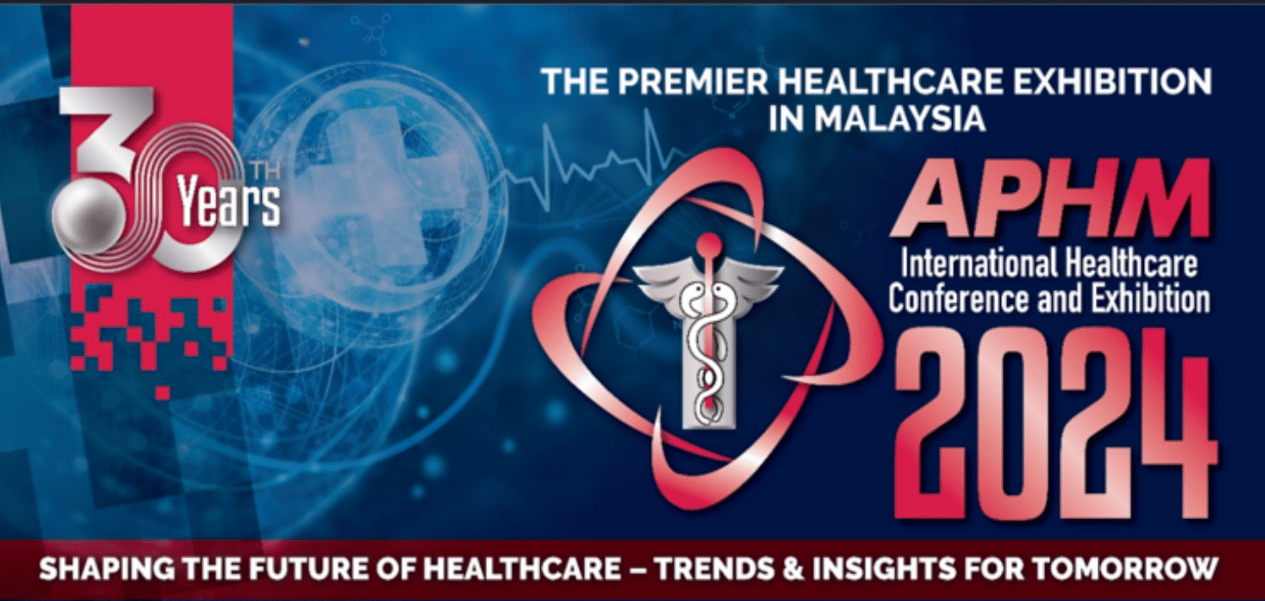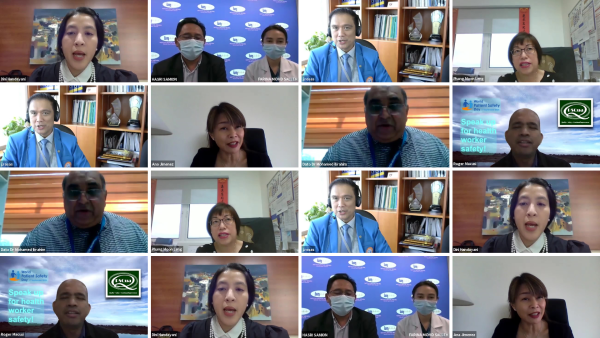In conjunction with World Patient Safety Day (WPSD) 2020, QUASR is organising a series of interviews with healthcare leaders to share their thoughts and to join the call for action to protect and support health workers.
Dr Ana Maria Jimenez is the Director of Quality Management at Asian Hospital and Medical Center (AHMC), Philippines. Passionate since her actualisation of the idea, she believes in paving ways for her organisation to provide better quality services and effectively manage the efficiency of medical processes through collaborative care. These strategies according to her, are worth establishing every day, and that planning for as many eventualities as early as possible should be second nature for anyone in her position, with meticulous evaluation of these all pointing towards furthering a culture of safety. Apart from being a single mother and raising two kids alongside her high-powered career, out of the medical centre, she enjoys keeping a sound mind through yoga and savouring healthy, wholesome meals that she takes time to prepare for her family.

In this interview, Dr Jimenez speaks compassionately on the importance of having health worker safety as an integral part of patient safety culture, paying tributes to pandemic heroes and safety champs, and how having emergency management plan and dashboards enable AHMC to respond quickly to the crisis and make informed decisions.
We also take this opportunity to thank Dr Jimenez for graciously accepting our interview request and sharing valuable thoughts and opinions with us. What follows is an edited transcript of the virtual interview between Dr Jimenez and Hak Yek Tan, Founder & CEO of QUASR.
Hak: How did AHMC celebrate WPSD 2020 and what does this year’s theme mean to you?
Dr Jimenez: We celebrated WPSD 2020 by expounding on the theme “Health Worker Safety: A Priority for Patient Safety”. We highlighted the importance of promoting the safety of our healthcare workers as an integral part of patient safety initiatives, thereby creating a culture of safety that encompasses the entire organisation.
We held a webinar on 17th September to celebrate WPSD. The webinar was officially opened by our Chief Medical Officer, followed by an inspirational message from our President & CEO. We invited two notable speakers from Joint Commission International (JCI) and our Chairman of Infection Control Committee. The event was overwhelmingly well attended by AHMC communities. I was extremely proud of it and took the opportunity to send a strong message on the importance of health worker safety. We gave awards and recognitions to our pandemic heroes and safety champs. Overall, it was a rewarding experience for all. I would say that as an organisation we have reached a level of maturity in terms of having a strong safety culture that people can identify with.
“Safe health worker is equal to safe patient is really a proven equation. Without health worker safety, there can be no patient safety.“
Hak: Do you agree that health worker safety is a prerequisite for patient safety?
Dr Jimenez: Yes, I totally agree. Safe health worker is equal to safe patient is really a proven equation. Without health worker safety, there can be no patient safety. During a pandemic, if we can’t protect our front liners, doctors and nurses by establishing safety protocols, we will soon run out of health workers to take care of our patients. If there is one thing which the pandemic has taught us, it is that we should take good care of our health workers.
Hak: What specific initiatives has AHMC taken to establish a strong safety culture?
Dr Jimenez: We highly encourage our staff to speak up or report any safety concerns or incidents without fear of reprisal. We also encourage all staff to report near misses so that we can aggregate and analysis the data, and then take appropriate preventive actions. Another safety practice we have is Safety Leadership WalkRounds. There is nothing like having our healthcare leaders going to the frontline to speak to the staff, listen to their feedback and address their concerns. We have uncovered issues, which could have otherwise escaped our attention, during the Leadership WalkRounds. Even our President & CEO is pleased to join us.
“Strong leadership support is one of the critical components in establishing a strong safety culture.“
Hak: How did AHMC respond to Covid-19 pandemic and manage safety risks?
Dr Jimenez: We had a JCI survey in 2019 which led to the strengthening of our emergency management plan. That really helps us and makes a big difference in the way we responded to the pandemic. Having a business continuity plan in the event of not only Covid-19, but any other globally communicable diseases, would be extremely helpful. We were able to augment our care capacity by fast-tracking the training for some of our general nurses to become specialty critical care nurses without compromising on patient and staff safety. Early in the pandemic, we started using dashboards and analysing data, which are critical in guiding our management in making informed decisions on procuring additional ventilators, PPEs, drug supplies and so on.
Measures implemented to mitigate safety risks include stringent Hot/Cold area zoning, screening protocols and making sure proper segregation of Covid and non-Covid related functions. The challenges for us are in communication, information dissemination and staff training, mostly done remotely. Online learning was fast-tracked. What had previously taken several months is now being done in a week!
Hak: Can you share with us the support and help provided to frontline workers to cope with anxiety, fatigue and burnout?
Dr Jimenez: We recently launched an awareness campaign on staff mental health and well-being as part of our overall strategy to improve staff safety and well-being. There are cases of staff working overtime and suffering from burnout, fatigue and emotional distress, not only during this pandemic but also during normal times. We provide our staff with transportation as well as boarding and accommodation at the hospital for those who do not feel safe to go back to their families. We also ensure that we have available good quality PPEs for them to use and feel safe.
Hak: How to convince your management the benefits of investing in staff safety?
Dr Jimenez: We are advocacy of value-based healthcare, always striving to achieve better outcomes at lower costs for our patients. As we discussed earlier, health worker safety is directly linked to patient safety. An unsafe workplace is more likely to lead to the occurrence of adverse incidents, causing harm to patients and staff, disruption to operations and lost efficiency. There are various obvious and hidden costs of poor staff safety, including physical injuries, penalties, financial and reputational costs. We call these the costs of poor quality. By investing in staff safety and a safe workplace, we can reduce the costs of poor quality while ensuring desirable outcomes for patients.
Hak: How do you see the pandemic reshaping healthcare with technology and innovation?
Dr Jimenez: We have been planning to offer telehealth services for some time. The problem then was many physicians were not keen. In May this year and amidst the pandemic, we went ahead to launch a telehealth program call the “TeleCouncil”. We see a bright future for telehealth and are considering alternative solution platforms. From the quality and safety standpoint, there is a need to establish quality and safety protocols for telehealth. One of our priorities is to use technology to reduce medication errors. The process of medication administration is very tedious involving as many as 25 steps. We believe technology can greatly minimize medication variations and errors.
Hak: How does AHMC pay tributes to front liners for their dedication and sacrifices made in the fight against Covid-19?
Dr Jimenez: We give awards and recognitions to our pandemic heroes and patient safety champs. Recognizing what they have done in front of the community in the WPSD webinar I mentioned earlier is a gratifying way of paying tributes to them. We are proud to have several physicians and patient safety champs serving as professional role models to the rest of the community. They go out of their way to serve, to report safety issues, to collaboratively work with other departments to do their part towards a better safety culture.
“Promoting patient safety is a multi-disciplinary collaborative effort.”
Hak: Can you share a lesson from the pandemic?
Dr Jimenez: If there is one other thing we learn from the pandemic, it is that promoting patient safety is a multi-disciplinary collaborative effort. The pandemic has helped all of us realise the importance of Information Technology, automation, online platforms to reach out to patients, in the provision of safe and quality care. We need to prioritise these and really focus on what we need most right now.
Hak: From how you describe your patient safety champs, they are all front liners, no less, in this fight against the pandemic. Thank you for sharing your insightful views that provides a good guidance to other hospitals in the community.



